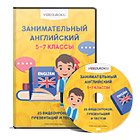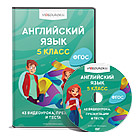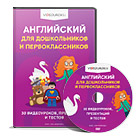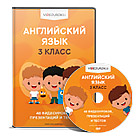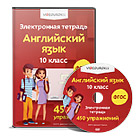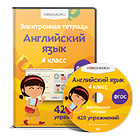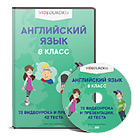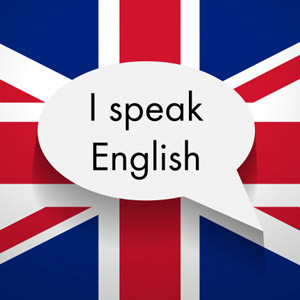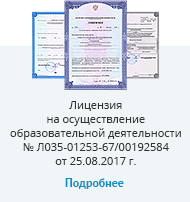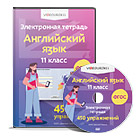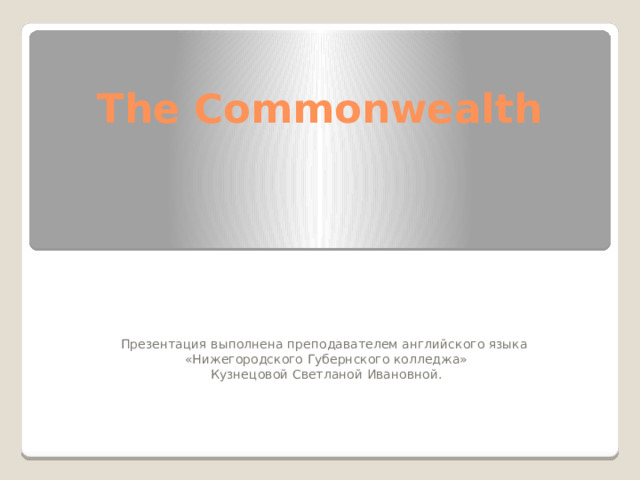
The Commonwealth
Презентация выполнена преподавателем английского языка
«Нижегородского Губернского колледжа»
Кузнецовой Светланой Ивановной.

Commonwealth , also called Commonwealth of Nations ,
formerly (1931–49) British Commonwealth of Nations ,
is a free association of sovereign states
comprising the United Kingdom
and a number of its former dependencies

The first members of the Commonwealth of Nations :
- the UK,
- Canada,
- Australia,
- New Zealand,
- South Africa,
- India,
- Pakistan,
- Ceylon (later Sri Lanka).
*In the years between 1926 and 1949
several countries joined and left the association.

Winston Churchill (first row, center) poses
with other Commonwealth leaders in 1945.

The Commonwealth Today
The Commonwealth is now a voluntary association of 54 countries, nearly all of which were formerly under British rule.
Rwanda and Mozambique, which joined in 2009 and 1995, respectively, are the exceptions.

The Royal Family's Involvement
The Head of the Commonwealth is not a hereditary position, but Queen Elizabeth was appointed to the role after her father King George VI's death, and in 2018, Prince Charles was named her successor.
Fifteen Commonwealth countries, known as Commonwealth Realms, also still call Queen Elizabeth their monarch.

Membership and criteria
For a period after the promulgation of the Statute of Westminster, membership in the Commonwealth came on condition of allegiance to the British monarch. But the rapid growth of nationalism from the 1920s in parts of the empire with chiefly non-European populations required a reconsideration of the nature of the Commonwealth. India in particular had been a special case within the British Empire; by title an empire in its own right, it had a viceroy, a separate secretary of state in London , its own army, and even, to a certain degree, its own foreign policy . When India and Pakistan were granted independence in 1947, they became members of the Commonwealth. In 1949 India announced its intention to become a republic , which would have required its withdrawal from the Commonwealth under the existing rules, but at a meeting of Commonwealth heads of government in London in April 1949 it was agreed that India could continue its membership if it accepted the British crown as only “the symbol of the free association” of Commonwealth members. That declaration was the first to drop the adjective British, and thereafter the official name of the organization became the Commonwealth of Nations, or simply the Commonwealth.

Structure and activity
The Commonwealth differs from other international bodies such as the United Nations or the World Trade Organization .
It has no formal constitution or bylaws.
The members have no legal or formal obligation to one another.
They are held together by shared traditions, institutions, and experiences as well as by economic self-interest.
Commonwealth action is based upon consultation between members, which is conducted through correspondence and through conversations in meetings.
Each member country sends an emissary, called a high commissioner , to the capitals of the other members.

The Commonwealth Secretariat, headed by a secretary-general, organizes and coordinates Commonwealth activities and facilitates relations between member states.
The Secretariat is responsible to the Board of Governors, composed of the member states’ high commissioner to the United Kingdom.
At high-level international events, the Commonwealth is represented by the Chair-in-Office , which rotates between member states every two years.
The Commonwealth Secretariat
![Britain has huge overseas investments, both government and private, in the Commonwealth. When Britain joined the European Economic Community (later succeeded by the European Union [EU]) in 1973, the trade privileges of member countries began to be reduced. Now Commonwealth members have trade agreements with the EU. Malta and Cyprus are members of both the Commonwealth and the EU. They remained in the EU even after Britain left in 2020.](https://fsd.multiurok.ru/html/2022/05/28/s_6291bcb4d0055/img9.jpg)
Britain has huge overseas investments, both government and private, in the Commonwealth.
When Britain joined the European Economic Community (later succeeded by the European Union [EU]) in 1973, the trade privileges of member countries began to be reduced.
Now Commonwealth members have trade agreements with the EU.
Malta and Cyprus are members of both the Commonwealth and the EU.
They remained in the EU even after Britain left in 2020.
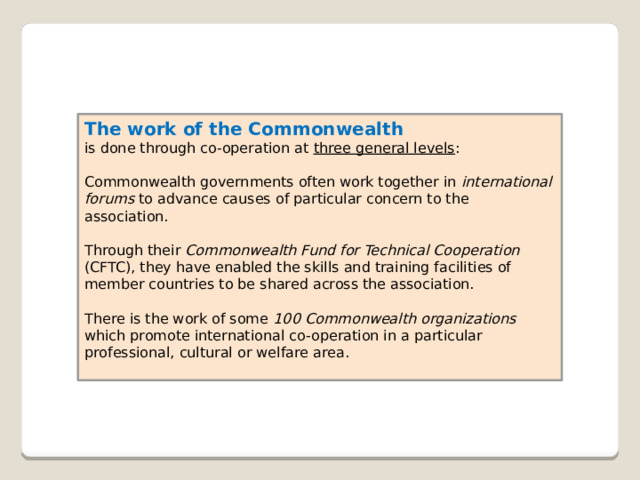
The work of the Commonwealth
is done through co-operation at three general levels :
Commonwealth governments often work together in international forums to advance causes of particular concern to the association.
Through their Commonwealth Fund for Technical Cooperation (CFTC), they have enabled the skills and training facilities of member countries to be shared across the association.
There is the work of some 100 Commonwealth organizations which promote international co-operation in a particular professional, cultural or welfare area.
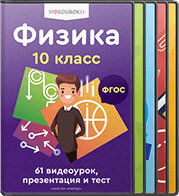

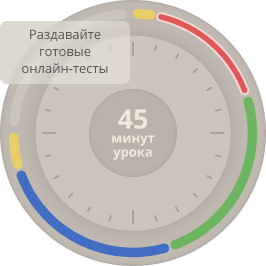













![Britain has huge overseas investments, both government and private, in the Commonwealth. When Britain joined the European Economic Community (later succeeded by the European Union [EU]) in 1973, the trade privileges of member countries began to be reduced. Now Commonwealth members have trade agreements with the EU. Malta and Cyprus are members of both the Commonwealth and the EU. They remained in the EU even after Britain left in 2020.](https://fsd.multiurok.ru/html/2022/05/28/s_6291bcb4d0055/img9.jpg)

